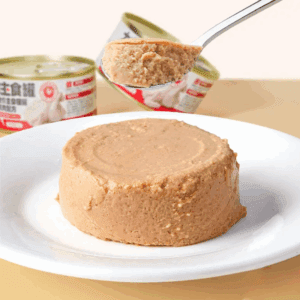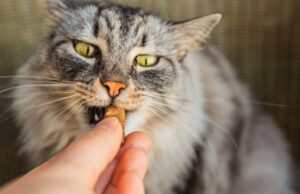Innovative Flavors and Formulations in Private Label Cat Treats: The Science Behind Feline Palatability
SEO Meta Description: Discover breakthrough innovations in private label cat treats – from freeze-dried textures to functional probiotics transforming feline nutrition in 2024.
Imagine watching a finicky feline suddenly perk up, eyes dilating with interest as they catch the aroma of a perfectly crafted treat. That moment of pure feline desire isn’t accidental—it’s the result of cutting-edge formulation science, innovative flavor profiling, and a deep understanding of what makes cats tick. Welcome to the fascinating world of private label cat treats, where science meets palatability in ways that are revolutionizing how we think about feline nutrition.
The cat treat industry is experiencing an unprecedented boom, with market dynamics shifting faster than a cat pouncing on its favorite toy. But here’s what most people don’t realize: creating a cat treat that actually satisfies our discerning feline friends is infinitely more complex than developing treats for dogs. Cats aren’t just small dogs—they’re evolutionary marvels with sensory systems fine-tuned over millennia for detecting the subtlest differences in prey.

The Cat Treat Market Revolution: Numbers That Demand Attention
A Market Meowing for Innovation
The statistics paint a picture of explosive growth that’s impossible to ignore. According to recent industry data, cat treat sales are surging at rates that significantly outpace dog treats, with dollar sales jumping 9.5% compared to the overall pet treat category growth of 6.1%.
The global pet treats market is projected to exceed $7.2 billion in 2025, maintaining a steady compound annual growth rate (CAGR) of 5-6%. More significantly, private label pet food sales rocketed by 25.6% in 2023, creating unprecedented opportunities for manufacturers and retailers to capture market share with innovative formulations.
What’s driving this growth? Three key factors are converging:
The Feline Population Explosion: Cat ownership is reaching new heights globally, particularly in urban environments where cats’ independent nature and smaller space requirements make them ideal companions.
Premium Product Demand: Pet humanization trends are pushing consumers toward premium, functional treats that deliver health benefits beyond basic nutrition.
Private Label Sophistication: Retailers are recognizing that private label cat treats offer higher margins and customer loyalty when formulated with innovative ingredients and formats.
Decoding the Feline Palate: The Science of Cat Taste Preferences
Understanding the Obligate Carnivore Advantage
To create irresistible cat treats, we must first understand what makes feline taste preferences so unique. Cats possess approximately 470 taste buds compared to humans’ 9,000, but their sensitivity to specific flavor compounds is extraordinarily refined.
Recent palatability research published in PMC reveals fascinating insights into feline taste preferences:
Protein-Centric Taste System: Cats have evolved to detect amino acids and nucleotides present in fresh meat with remarkable precision. Their taste receptors are particularly sensitive to compounds like inosine monophosphate (IMP) and guanosine monophosphate (GMP), which create the “umami” or savory taste profile they crave.
Temperature Sensitivity: Wild cats prefer prey at body temperature (around 38°C/100°F). This preference translates to modern treats, where temperature-stable flavor compounds that mimic fresh prey perform significantly better in palatability tests.
Texture Discrimination: Studies indicate that cats can distinguish between textures with extraordinary precision, preferring kibble that is crispy and made into specific shapes like discs and triangles over other formats.
A breakthrough study by researchers using feline taste panels found that cats showed clear preferences for fish flavors over rabbit, with orange flavor being consistently rejected. This research underscores the importance of species-appropriate flavor profiling in treat development.
Texture Revolution: From Crunchy to Freeze-Dried Excellence
The Mouthfeel Breakthrough
Texture isn’t just about palatability—it’s about delivering an eating experience that triggers deep-seated hunting instincts. Modern cat treat manufacturing has evolved far beyond simple extrusion, embracing technologies that create textures impossible to achieve just a decade ago.
Freeze-Dried Innovation: The freeze-dried pet treat market reached $2,016.7 million in 2023 and is experiencing explosive year-over-year growth. Freeze-drying preserves the cellular structure of raw ingredients while concentrating flavors to levels that cats find irresistible. The process removes moisture through sublimation, creating a light, airy texture that rehydrates instantly when it hits the cat’s mouth, delivering an intense flavor burst.
Air-Dried Advancement: Air-drying at temperatures below 100°C preserves heat-sensitive nutrients while creating a chewy texture that satisfies cats’ natural gnawing instincts. This process maintains the nutritional integrity of raw ingredients while achieving shelf stability without artificial preservatives.
Dual-Texture Formulations: Innovative manufacturers are creating treats with contrasting textures—a crunchy exterior that provides satisfying dental benefits combined with a soft, flavor-rich center that delivers immediate palatability rewards.
Flavor Innovation: Beyond Traditional Fish and Chicken
Exploring Exotic Protein Sources
The days of basic fish and chicken flavors dominating cat treats are rapidly ending. Today’s discerning cat owners demand variety, and innovative manufacturers are responding with flavor profiles that would have been impossible to create cost-effectively just a few years ago.
Novel Protein Exploration: Rabbit, venison, duck, and even insect-based proteins are gaining traction. These proteins not only offer hypoallergenic benefits but also provide unique amino acid profiles that cats instinctively recognize as “prey-like.”
Organ Meat Integration: Liver, heart, and kidney flavors are experiencing a renaissance as manufacturers recognize that these organ meats contain the concentrated nutrients and flavors that cats evolved to seek. Modern processing techniques can capture these intense flavors without the traditional stability issues.
Fermented Flavor Compounds: Controlled fermentation processes are creating umami-rich flavor compounds that dramatically enhance palatability. These naturally occurring flavor enhancers mimic the taste development that occurs in aging prey, triggering deep satisfaction responses in cats.
Botanical and Herb Inclusions: Catnip, valerian, and silver vine aren’t just for toys anymore. When properly incorporated into treat formulations, these botanicals create multi-sensory experiences that combine taste with aromatherapy effects.
Functional Formulations: Treats That Heal and Nourish
Beyond Basic Nutrition
The functional treat category is exploding as pet owners seek products that deliver targeted health benefits. Recent market analysis shows that functional treats fortified with probiotics, glucosamine, taurine, and lysine are experiencing double-digit growth rates.
Digestive Health Revolution: Probiotic cat treats are becoming increasingly sophisticated, with manufacturers using specialized encapsulation technologies to protect beneficial bacteria through processing and storage. Australian startups are pioneering freeze-dried functional yogurt bites that deliver billions of live cultures in each serving.
Joint Health Support: Glucosamine and chondroitin sulfate integration is evolving beyond simple powder mixing. Advanced processing techniques are creating treats where these compounds are chemically bound to protein matrices, improving bioavailability and stability.
Urinary Health Focus: L-methionine and cranberry extract formulations are addressing one of the most common feline health concerns. These ingredients are being incorporated into palatability systems that mask their naturally bitter flavors while maintaining therapeutic effectiveness.
Cognitive Support: Omega-3 fatty acids from algae sources are being stabilized through innovative encapsulation technologies, creating treats that support brain health without the fishy odors that can become rancid over time.
Manufacturing Innovation: Technology Meets Tradition
Process Engineering Breakthroughs
Creating consistently excellent cat treats requires manufacturing processes that would astound pet food pioneers from just two decades ago. Today’s advanced facilities combine traditional food science with cutting-edge technology to achieve previously impossible quality standards.
Precision Extrusion Systems: Modern extruders can create precise density gradients within individual treats, allowing for controlled release of flavors and nutrients. This technology enables the creation of treats with immediate palatability followed by sustained flavor release.
Spray-Coating Mastery: Advanced coating systems can apply multiple layers of different functional ingredients, creating treats that deliver sequential health benefits as they’re consumed. This technology allows for the combination of water-soluble and fat-soluble nutrients in single products.
Quality Control Evolution: Real-time palatability testing using electronic noses and texture analyzers ensures consistency batch after batch. These systems can detect flavor variations that might not be apparent to human senses but could significantly impact feline acceptance.
Private Label Opportunities: Customization at Scale
The White Label Advantage
For retailers and brand developers, the private label cat treat market represents an unprecedented opportunity to capture premium pricing while building customer loyalty. Market data shows that private label products can achieve margins 20-40% higher than national brands while still offering consumers better value.
Customization Capabilities: Modern private label manufacturers can create unique formulations, shapes, and packaging that differentiate products in crowded retail environments. This includes custom flavor profiles developed specifically for target demographics or regional preferences.
Speed to Market: Private label partnerships allow retailers to respond rapidly to emerging trends without the massive R&D investments required for independent development. New formulations can move from concept to shelf in months rather than years.
Brand Building: Private label cat treats allow retailers to build expertise and customer relationships in the high-growth pet category while maintaining control over their brand narrative and pricing strategies.
Sustainability and Clean Label Trends
Environmental Consciousness Meets Pet Nutrition
Today’s pet owners are increasingly concerned about environmental impact and ingredient transparency. This has led to significant innovations in sustainable sourcing and clean label formulations.
Sustainable Protein Sources: Insect-based proteins and lab-grown meat alternatives are moving from experimental to commercial reality. These protein sources offer complete amino acid profiles while requiring significantly fewer resources than traditional livestock.
Clean Processing: Minimal processing techniques that preserve natural flavors and nutrients while achieving food safety standards are becoming standard. This includes high-pressure processing (HPP) and other non-thermal preservation methods.
Transparent Sourcing: Consumers demand to know where ingredients come from, leading to innovations in supply chain transparency and traceability systems that can track individual ingredients from source to finished product.
Quality Control: The Science of Consistency
Palatability Standardization
Creating consistently palatable cat treats requires sophisticated quality control systems that go far beyond basic food safety testing.
Sensory Panel Management: Professional feline taste testing requires carefully managed cat colonies with standardized feeding protocols. These panels can detect subtle formulation changes that might impact palatability while ensuring treats meet feline preferences consistently.
Analytical Chemistry: Advanced testing equipment can quantify specific flavor compounds and predict palatability outcomes before costly production runs. This includes gas chromatography-mass spectrometry (GC-MS) systems that can identify and quantify individual aroma compounds.
Texture Analysis: Instrumental texture analysis using penetrometers and texture analyzers provides objective measurements that correlate with feline texture preferences, allowing for consistent reproduction of successful formulations.
Market Segmentation: Targeting Specific Needs
Precision Marketing Through Formulation
The cat treat market is rapidly segmenting into specialized niches that require distinct formulation approaches.
Life Stage Specific: Kitten treats require higher protein and fat levels with smaller pieces and softer textures. Senior cat treats often incorporate joint health ingredients and easier-to-chew textures.
Health Condition Focus: Diabetic-friendly treats with controlled carbohydrate levels, kidney-support treats with restricted phosphorus, and weight management treats with high protein and fiber content are all growing market segments.
Breed-Specific Considerations: Large breed cats may prefer different treat sizes and textures compared to smaller breeds, creating opportunities for targeted formulations.
The Economics of Innovation
Investment Returns in R&D
Developing innovative cat treat formulations requires significant investment, but the returns can be substantial for companies that successfully capture market share in this high-growth category.
Cost-Benefit Analysis: While advanced processing technologies and premium ingredients increase production costs, the ability to command premium pricing often results in improved profit margins compared to commodity products.
Scale Advantages: Once innovative formulations are developed, the marginal cost of production often decreases significantly with volume, providing competitive advantages for manufacturers who can achieve scale.
Future Trends: What’s Coming Next
The Next Wave of Innovation
Several emerging trends are likely to shape the future of cat treat innovation:
Personalized Nutrition: Advances in genetic testing and microbiome analysis may enable truly personalized treat formulations based on individual cats’ genetic profiles and gut bacteria compositions.
Smart Treats: Integration of technology that can monitor consumption patterns and health metrics may create treats that provide real-time feedback about feline health status.
Alternative Processing: Novel processing technologies like pulsed electric fields and ultrasound may enable new texture and flavor combinations while preserving heat-sensitive nutrients.
Partnering for Success: Choosing the Right Manufacturer
The Matchwell Pets Advantage
For businesses looking to enter or expand in the private label cat treat market, partnering with an experienced manufacturer is crucial for success. Matchwell Pets offers comprehensive private label and OEM services specifically designed for the unique challenges of cat treat formulation.
Our state-of-the-art facilities combine traditional food science expertise with cutting-edge processing technologies to create treats that consistently deliver the palatability and nutrition that cats require. From initial concept development through final packaging, we provide end-to-end support that enables our partners to bring innovative products to market quickly and cost-effectively.
Whether you’re looking to develop functional treats with specific health benefits, explore novel protein sources, or create unique textures that differentiate your brand, our team of food scientists and feline nutrition experts can help you navigate the complex landscape of cat treat innovation.
Conclusion: The Future is Feline-Focused
The cat treat industry stands at an inflection point where scientific innovation meets explosive market demand. Success in this space requires more than basic food manufacturing knowledge—it demands deep understanding of feline physiology, advanced processing capabilities, and the ability to translate complex nutritional science into products that cats instinctively crave.
For manufacturers, retailers, and brand developers, the opportunities in private label cat treats have never been more promising. The convergence of growing cat populations, increasing consumer sophistication, and advancing manufacturing technologies creates a perfect storm of opportunity for those prepared to invest in innovation.
The cats of today—and tomorrow—deserve treats that honor their evolutionary heritage while delivering the health benefits and palatability experiences that modern pet ownership demands. By embracing the science of flavor innovation, texture engineering, and functional formulation, we can create products that don’t just satisfy cats’ hunger but enhance their overall quality of life.
The future of cat treats isn’t just about what cats want to eat—it’s about creating products that cats were biologically designed to crave while delivering the health benefits that responsible pet owners demand. That’s the sweet spot where science, innovation, and market opportunity converge to create truly exceptional products.
Ready to explore innovative cat treat formulations for your brand? Contact Matchwell Pets to discover how our expertise in private label pet treat manufacturing can help you capture market share in this rapidly growing category.
Sources:












